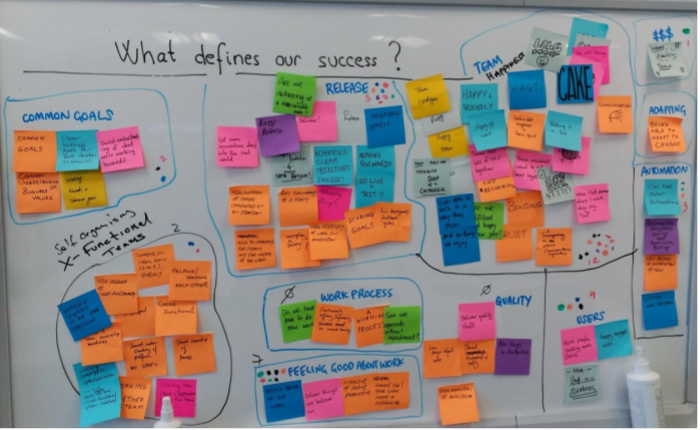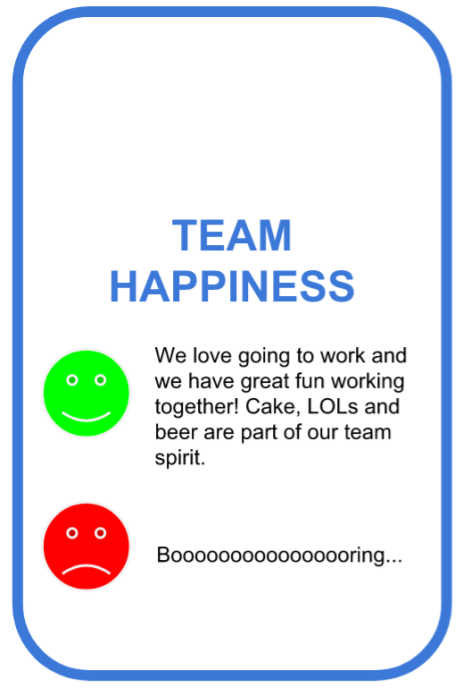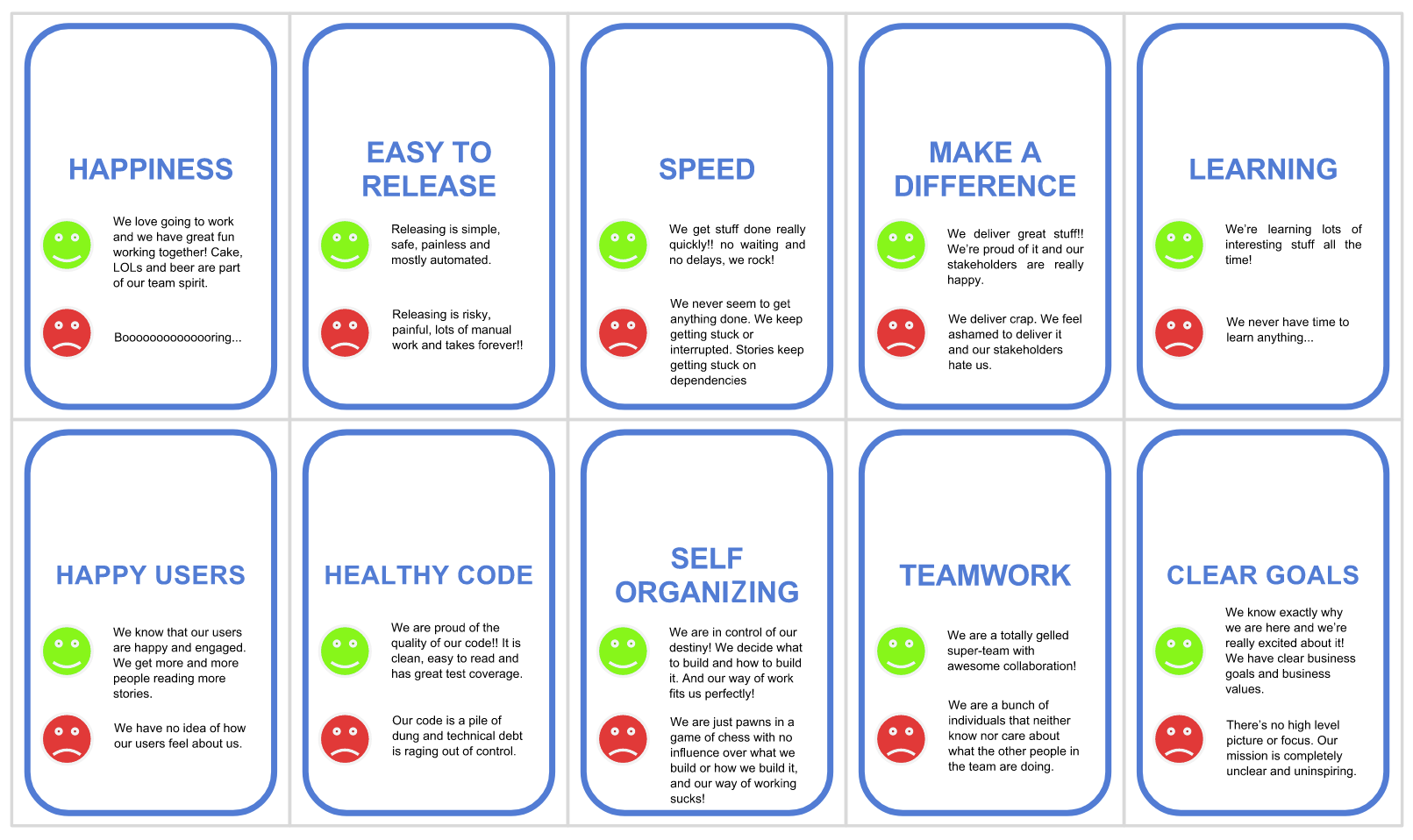In Chapter 5, Bootstrap Teams with Liftoffs, we discussed defining success using an activity called Success Sliders.
In the Success Sliders activity, we asked the team to consider seven different sliders which represent different facets of success: Customer Satisfaction, Team Satisfaction, Deliver Value, Deliver on Time, Deliver on Budget, Deliver All Defined Scope, and Meet Quality Requirements.
These particular characteristics focus on delivery in a project setting. In a long-lived product environment with iterative/incremental delivery, these could be redefined, for example:
- On time becomes early and often
- On budget becomes cost-effective
- Defined scope becomes useful software or satisfied users
However, all teams are different, and these particular factors may not apply to our team or its mission. So, in this section, we are going to take a look at a team activity that is used to define our own set of success factors.
What we'll need: A whiteboard, whiteboard markers, post-it notes, and sharpies
Setup: A large table that the whole team can fit comfortably around
Remember: Set a time box before this activity starts
Follow these steps to define what success will look like:
- On the whiteboard, write the headline question: how will we define our success?
- Pass out post-it notes and Sharpies to each team member. Tell them they're going to do some silent brainstorming. Ask them to answer the headline question and write one item per post-it note.
- Answer any questions, and when everyone is comfortable, set the time box to 15 minutes and start.
- When 15 minutes is up, assess the room and determine if anyone needs any more time. If everyone is ready, get the team to take it in turns to post their post-its on the whiteboard. Ask each team member to read their post-its out loud as they do so.
- There will likely be some duplicates and similar themes. Ask the team to come up to the board and do some affinity mapping, involving grouping related ideas together. Move similar post-it notes next to each other then circle the group and give it a name which encompasses the fundamental concept.
The following shows the result that one team came up with:

In the image, you can see we've voted on each cluster to indicate which ones our team thinks are priorities. Based on the votes, we only took the top 10, as we felt that there were enough indicators for our team to monitor.
To create our set of Team Success Indicators, we used the post-its within each group to inspire us to write two statements, one positive and one negative, for each indicator. For example, the Team Happiness card statements were defined as follows:

We used the preceding template for each indicator and got the following results:

